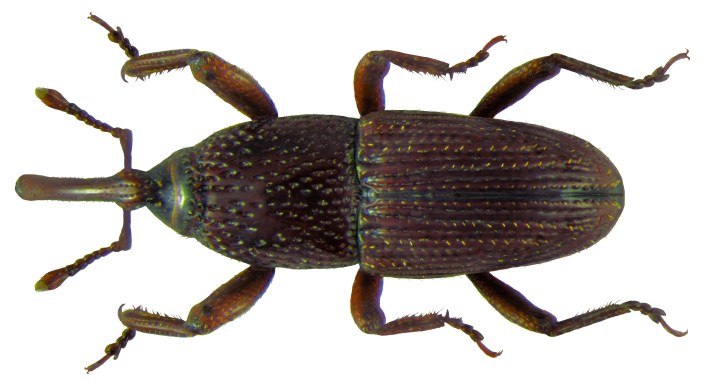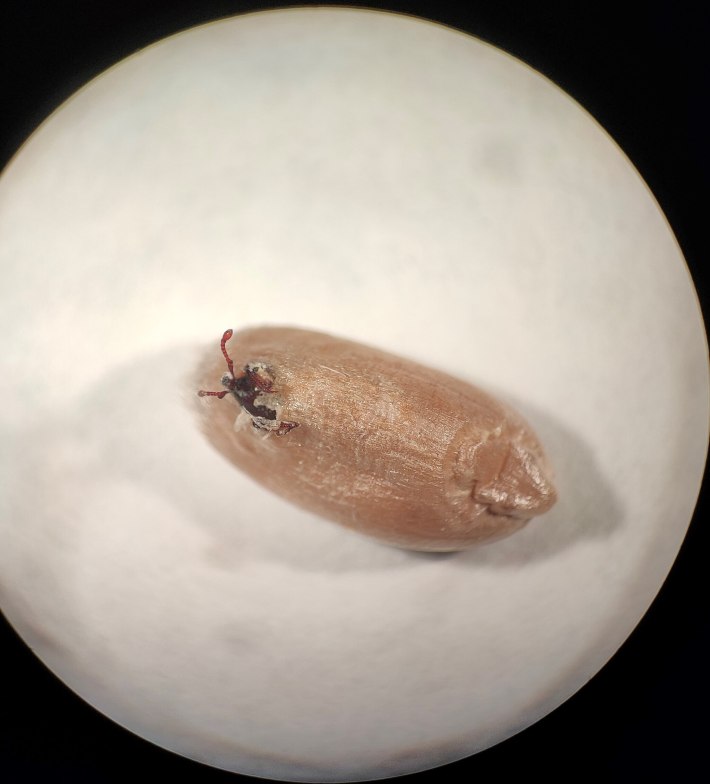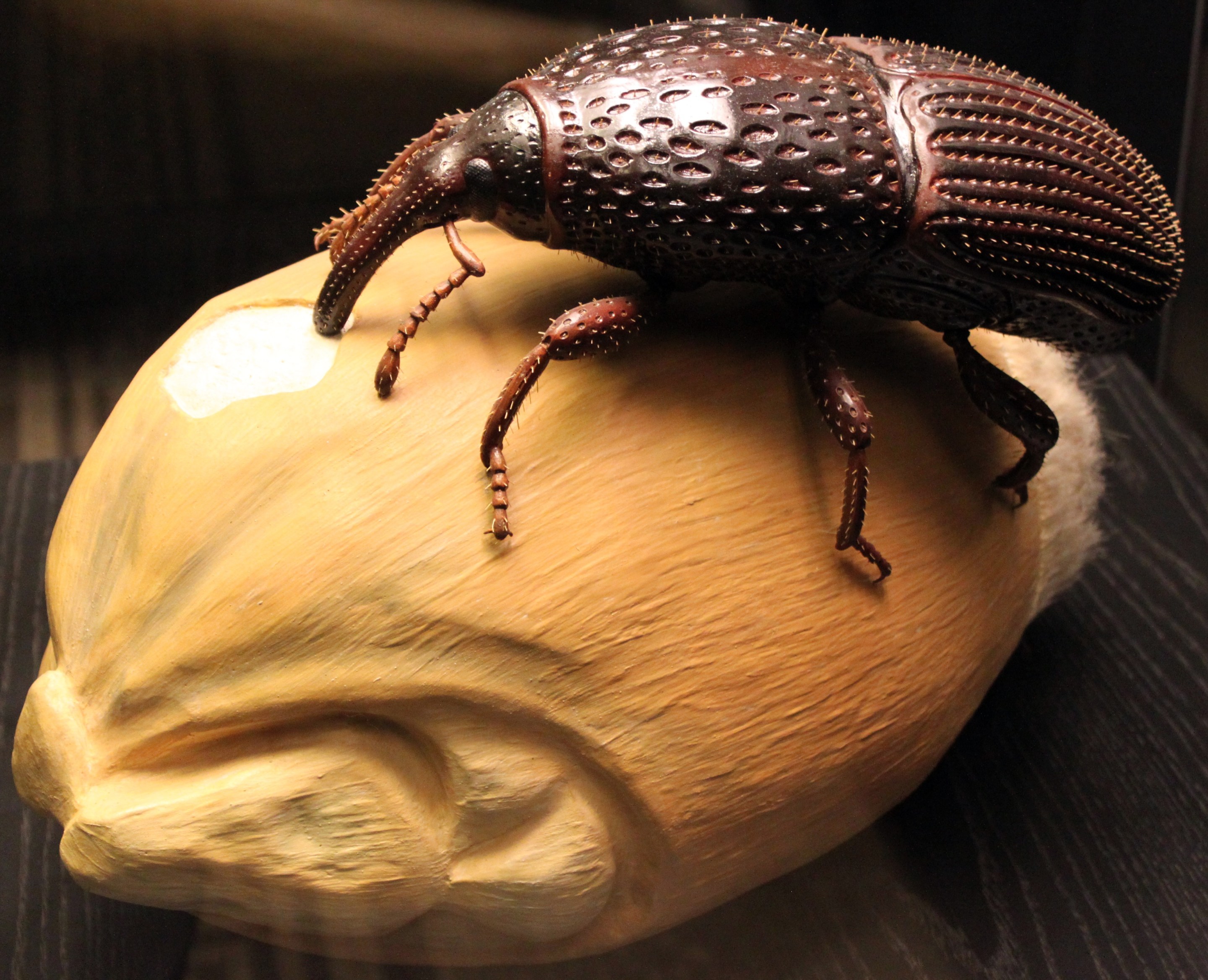Welcome to Meet Our Little Neighbors, an occasional series about the little guys who live among and around us, but rarely get the attention they deserve.
In his book Generation of Animals, ancient philosophy bro Aristotle posited that certain animals came into being spontaneously, created not by others of their species but instead from non-living matter. Oysters came from slime, and clothes moths came from wool. Different insects came from snow, wine, dried sweat, dung, books, and, poetically, dew falling on leaves. Over thousands of years, this theory of spontaneous generation became widely accepted and proliferated into a number of "recipes" that people could use to make animals of their own. Want frogs? Simply add rainwater to some mud. Need maggots? Leave out a slab of meat for a few days. Desire scorpions? Put some basil in a brick and leave it out under the sun.
In a time before microscopes, this theory was intuitive. It explained the origins of many small creatures such as insects, whose penchant for metamorphosis obscured their life cycles. The theory of spontaneous generation would later be challenged by a scientists starting in the 17th century and eventually be disproved by Louis Pasteur in 1859. From our vaunted perspectives as modern people living in a nation supposedly liberated from malarkey, it is easy to point to the theory of spontaneous generation as a dig against medieval people; as one Redditor decreed: "Despite people being very ignorant back then there’s no way they where (sic) that dumb."
And yet, sometime last summer when I opened a drawer of loose cables and dongles to discover a small flotilla of grain weevils, my mind raced with the very same question. Where had the weevils come from? I had seen no weevil. At the time, I did not even know they were weevils. I only knew they were not ants; their little burgundy bodies were too smooth and blimp-like, and who could miss that sloping, anteater-like snout? If they were ants, I would have not have asked this question; everyone knows ants come from outside, marching in through a building's cracks and holes. But the weevils were totally new, with no clear origin, and would soon swarm my apartment with the comfort of someone who had always lived there.

Soon after we saw the first weevil, the weevils were everywhere. A quick google suggested our new roommates were one of three possible weevils in the genus Sitophilus, which contains the rice weevils, grain weevils, and maize weevils. But the longer I observed them, I became convinced they were grain weevils, or Sitophilus granarius, the most uniformly brown of the three, and the only unable to fly. I found myself unexpectedly charmed by the grain weevils; never before had my apartments been infested with such a delightful-looking creature. I have shared apartments with more shudder-inducing invertebrates: fruit flies, drain flies, ants, mosquitoes, and a cosmopolitan assortment of roaches both American and German. But the weevils were cute! I liked watching them nose around the wall or floor with their stately little snouts. I liked how their exoskeletons were subtly stippled, and how their six legs tapered into weird little feet. I had succumbed to the sheer charisma of the grain weevils, which only complicated the task at hand.
Killing a weevil is not as easy as killing an ant. Weevils are a type of beetle, and thus covered with a hard, armored exoskeleton; by comparison, a caterpillar's exoskeleton is much softer and less rigid. One beetle in particular, the diabolical ironclad beetle, has an exoskeleton so tough that it can be run over by a Toyota Camry. The grain weevil is far less tough than that. But its exoskeleton is still admirably sturdy, buttressed by wings have fused together and hardened and fortified with the help of bacteria in its gut. The first time I smushed a weevil with my finger, I applied what would have been appropriate pressure to flatten an ant, which left the weevil still resolutely alive, if worse for wear. I learned to smush the weevils until I heard the sickly crunch of a weevil exoskeleton buckling beneath my thumb. You might be thinking, is squishing the bugs, weevil by weevil, the most efficient way to remove them from your apartment? Of course it is not. If it were just a weevil or two a week, I would have left the weevils be. But that winter conjured a relentless onslaught of weevils, so numerous that I would conduct weevil sweeps before dinner parties to keep up the pretense that my partner and I did not, in fact, live in a weevil den.
Grain weevils live in grains like oats, rice, wheat, corn, so our investigation started in our pantry. We tore apart our cupboards multiple times in search of a weevil nest, dumping perfectly good dry goods that could have cloaked unseen bugs. We began storing all our flour, pasta, cereal, and other grains in the fridge until there was little room left for things that actually needed to be kept cold. But we found nary a weevil in our cupboards, let alone any trace of a nest. Instead, the weevils appeared, seemingly at random, in far-flung corners of our apartment. A weevil crawling up a wall by the sink. A weevil heading to the shoe rack. A weevil marching out from under the sofa. With no new leads, we reluctantly coexisted with the weevils; what others may have called an infestation, I thought of as cohabitation. When we watched TV on the projector at night, weevils became supporting actors in everything we watched. They crawled over the faces of the hot singles of Love Island, the heavily botoxed crevasses of Jeff Probst's face, the vast expanses of snow in Drive My Car.
Each time I saw a weevil, I felt a twinge of something—wistfulness?—for the days when spontaneous generation was an acceptable explanation. All our grains were in the kitchen, so what else could explain where all the weevils were coming from? It seemed entirely possible that the weevils were budding from the walls, congealing from dust, or sprouting from a litter box. In the era of spontaneous generation, people believed weevils spawned from grains and, at least mechanically speaking, they weren't entirely wrong.

The Dutch microscopist Antonie van Leeuwenhoek, the first person to observe bacteria and protozoa (which he sweetly deemed "animalcules") as well as his own swimming sperm (which he also deemed "animalcules"), briefly devoted his attention to the life cycle of a grain weevil. Leeuwenhoek had become interested in the weevils as an opportunity to disprove the assumption that the bugs were generated spontaneously. In 1687, he placed grain weevils in vials alongside wheat grains. He discovered that a female grain weevils uses her mandibles to chew a hole in a grain kernel, deposit her egg, and then seals the hole with a gelatinous secretion. The egg then hatches into a larva, which feeds on and grows inside the kernel until it matures into an adult, chews its way out of the kernel, and then wanders off to mate and make more weevils. So although grain weevils do emerge from grains, they technically come from weevil eggs.
But back to my apartment. Winter passed, and so did spring, and everything warmed. Then one day my partner T opened a dusty drawer in our credenza to find our sunscreens and paddle ball set covered in a light dusting of weevils. T had discovered the apocryphal nest: a bag of birdseed so thoroughly chewed that they compared it to a perforated mesh jersey. It was certainly the most breathable plastic bag I've ever seen. T double-bagged the nest and placed it unceremoniously in a trash bin outside as I watched from inside the living room. It was a bittersweet goodbye, and, save for a few stragglers, the weevils were gone for good.
Nearly a year later, I still think of the weevils whenever I open a container of grains or see a brown speck, which almost always turns out to be a boring old ant. Earlier this spring, when I read a paper describing how beetles such as grain weevils and red flour beetles open up their rectums to suck in water from the air, I felt an odd swell of pride. My weevils, breathing through their butts! As an unintentional proxy for a grief support group, I joined the subreddit r/weeviltime, where people joyously post pictures of the weevils that wander into their lives. I scrolled through my phone to find a photo of my grain weevils so I, too, could post to r/weeviltime, but found nothing. I do not want the weevils back, but I will always think of them fondly, as creatures that, however briefly and illogically, made me believe in a kind of magic—my year of Aristotelian thinking.






